“I have no friends. The more you learn about the dignity of the gorilla, the more you want to avoid people.” Dian Fossey
Today, December 26th, marks the 37th anniversary of the murder of primatologist, Dr. Dian Fossey. Fossey is world renowned for her extensive study of mountain gorillas in Rwanda over a span of 18 years. It was Fossey’s work that introduced the world to mountain gorillas. She showed how gentle gorillas can be. She wrote a book in 1983, “Gorillas in the Mist” about her own personal story to fund her efforts in Rwanda. Her book was made into a movie (same title) starring Sigourney Weaver as the late Dian Fossey.
Fossey was able to infiltrate a gorilla’s society and become a honorary member of the family. When they accepted her, she learned how strong of a relationship the mother gorillas had with their offspring. She saw how they mourned loved ones like us. Male and females share a strong bond. Fossey learned the different methods of communication between gorillas. She founded the Karisoke Research Center, a remote rainforest camp nestled in the Virunga Mountains in Ruhengeri province, Rwanda.
Fossey became internationally famous when a National Geographic photographer, Bob Campbell, took her photo for the cover of the magazine in January 1970 catapulting her to celebrity status. This, in turn, produced publicity for her work to save the mountain gorillas from extinction. She wanted to convince the world gorillas were not as bad as they were depicted in movies and books. “Photographs showing the gorilla “Peanuts” touching Fossey’s hand depicted the first recorded peaceful contact between a human being and a wild gorilla. Her extraordinary rapport with animals and her background as an occupational therapist brushed away the Hollywood “King Kong” myth of an aggressive, savage beast.”
Fossey’s favorite gorilla, Digit, shared a deep bond with her. When 5 year old Digit was stabbed multiple times and killed on December 31st, 1977 by poachers, it was Fossey who found his carcass. His head and hands were severed. After “Uncle Bert,” another member of the same gorilla family was killed, she declared war on the poachers.
Fossey established the Digit Fund a year after Digit’s murder to raise money to save the mountain gorillas from poachers. The name has been changed to the Dian Fossey Gorilla Fund International, a charity for the protection of endangered mountain gorillas.
Diplomacy was not her strong point
As much good as Fossey had done singlehandedly for mountain gorillas, her extreme tactics against the poachers received notoriety. Some of Fossey’s assistants have said she wouldn’t allow any researcher with black skin to work with her because the gorillas associated it with poachers and would flee. The poachers mainly killed the gorillas for the infants to be sold into the zoo trade destroying their families. The poachers sold the hands of gorillas to be used as ashtrays. The heads of the gentle giants were sold to be used as “trophies.”
Fossey was called a racist. It’s been said she would refer to African workers as wogs, a racially offensive slang word referring to a dark-skinned person from Africa. She refused to work with the Rwandan people. After her declaration of war, she would engage in wearing masks, burned snares, kidnap or kill poachers’ cattle or spray paint them to discourage herders from having them graze inside a national park. The Dian Fossey Gorilla Fund International calls her methods “unorthodox.” Fossey herself called her strategy “active conservation.” “These tactics were not popular among locals who were struggling to get by,” Dian Fossey Gorilla Fund International writes on its website.
Her goal was to protect the gorillas no matter what the cost and wasn’t scared to take the law into her own hands.
Everything became personal when “her” gorillas were attacked. Some people described her as an embittered woman who snubbed fellow researchers and met all Africans with condescendence and rejection.
Fossey has been referred to as misanthropic which translates to a person who has contempt, a general hatred or dislike of the human species. She lived in an isolated area on a mountain slope and alone for a good portion of her time. Food and mail were delivered twice a week. There were no cell phones, no computers/internet.
She fought hard to protect mountain gorillas but was angry after “members of her family” were killed one after the other.
This was the complexity of Dian Fossey. Her pioneering research saved the mountain gorillas. When she began her extensive studies, there were 250 gorillas. Today there are over 480 in the Virunga mountains and 880 worldwide but still considered critically endangered by the International Union for Conservation of Nature.
After years of letting her temper flare, some foes said her death came as no surprise. “She mistreated everyone around her and finally was done in,” Fossey’s former research associate Bill Webber told Harold Hayes, one of Fossey’s biographers.
“According to Hayes, Fossey tortured her enemies, kidnapped their children, and killed their cattle, along with many lesser humiliations. Her letters confirm much of the rap sheet: Fossey writes of subjecting a captured poacher to a “nettle lashing routine” and describes how she retaliated against the abduction of an infant gorilla, by luring away a small child of the Watusi tribesman who was responsible.”
“Fossey’s death is often attributed to poachers, and in 1978, after three nearby gorillas had been killed, Fossey wrote in a letter to her uncle, “The poachers want me out of here very, very badly, and I have been told that I am next on their list.”
She was found on the morning of December 27th, 1985. Her face and skull had been split diagonally with one machete blow.
Renowned chimp primatologist Jane Goodall wrote, “If Dian hadn’t done what she had, there would be no gorillas left in Rwanda to study.”
Dian was an extremely complex person. Should her misanthropic personality outshine the good work she did to save the mountain gorillas?
Her murder remains unsolved.
Tina Evangelista-Eppenstein is a television talk show host, speaker, writer and is an unabashed animal advocate. Her love for animals and quest for the hard truth is what drives her passion for all things animals. She hosts the show, ” A Close-Up Look at Animal Welfare Issues.” She adores her once-abused tripawd, Brody. If you’d like Tina to talk to your group or have a story, please email her at tevangelistaepp@yahoo.com. Like https://www.facebook.com/ACloseUpLookAtAnimalWelfareIssues and check out AnimalWelfareIssues.com for all the tv shows, articles, and podcasts you may have missed!
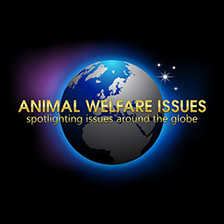
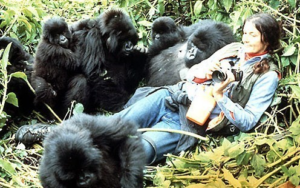
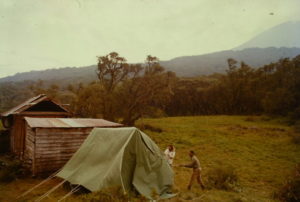
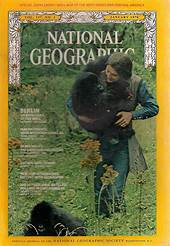
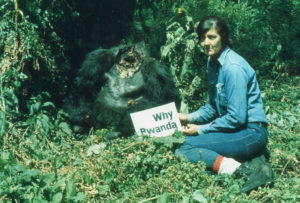
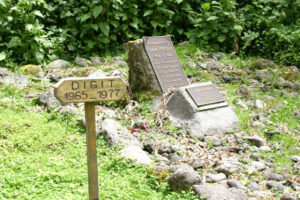
Dian Fossey was an enigmatic person. She did help save the mountain ? . There’s different kinds of animal people. Those who love animals but not people and those who can love animals and people. Dian fits into the first category. They prefer animals over people and many aren’t nice to be around.
How could she care so much about gorillas and torture kids and livestock? She became her own worst enemy which led to her own death. Her irrational behavior doesn’t detract from her contribution of saving mountain gorillas in Central Africa. Without her studies there wouldn’t be any.
No I don’t think it should.
Dian Fossey was an enigma. She loved the gorillas so much she lived among them but was so lonely for human companionship but didn’t seem to know how to have a real effective relationship. She was mean to locals which doesn’t sit well for an animal activist. She could be quite cruel. She was a hard person to understand. Someone was sick of her to kill her in a barbaric manner.
She kidnapped children. Yes, that outshines her work.
A strange woman. For the all the good she did, she was cruel to people. Hypocrisy. I see that trait in quite a few animal activists. They turn people off.
It is truly a nice and useful piece of info. I’m satisfied that you shared this useful info with us.
Please keep us up to date like this. Thanks for sharing.
very good article about Fossey. She seems like she was not of sound mind at times. She loved the gorillas but was an enigma.
Like!! Thank you for publishing this awesome article. While Dian Fossey cared about the gorillas, I believe she became more paranoid over time as she was more and more isolated which led to her demise. Sad and tragic.
Thanks for the very good article